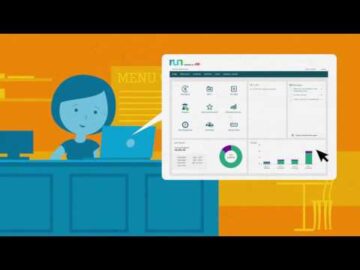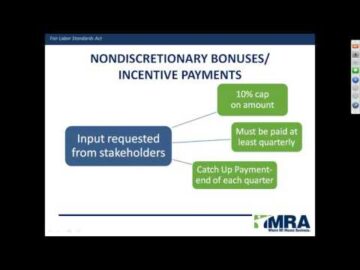
These costs are subsequently transferred to the finished goods account and eventually to the cost of sales. In supply-chain management, work-in-progress (WIP) refers to goods that are partially completed. This covers everything from the overhead costs to the raw materials that come together to form the end product at a given stage in the production cycle. In accounting, WIP is considered a current asset and is categorized as a type of inventory. Accountants use several methods to determine the number of partially completed units in WIP.
insurtech Market 2023 Trends with Analysis on Key Players Damco … – University City Review
insurtech Market 2023 Trends with Analysis on Key Players Damco ….
Posted: Wed, 02 Aug 2023 19:44:04 GMT [source]
For example, a manufacturer of electronics products may sell its partially completed units in its WIP to another company with similar manufacturing operations. The terms work-in-progress pfl claim and finished goods are relative terms made in reference to the specific company accounting for its inventory. They are not absolute definitions of actual materials or products.
Finally, when the product is sold, it moves from a form of inventor to cost of goods sold (COGS) on the balance sheet. For accounting purposes, process costing differs from job costing, which is a method used when each customer’s job is different. The chief advantage of these systems lies in unified access to real-time production data.
Accounting for work in process
If Horizontal Analysis involves the evaluation of a series of financial statements for more than one reporting period, Vertical Analysis focuses on the financial statement of a company for a single period. In this method, each line item of the financial statement is treated as a percentage of the whole. In addition to what goes into recording the accounting data, there are some other important things to keep in mind. Generally accepted accounting principles require the amount of each type of inventory to be disclosed in the financial statements.
At some locations, you’ll also need to bring along another form of ID that includes your name, address or phone number so they can properly credit your account. WIP inventory is usually calculated periodically or at the end of the financial year for accounting purposes. While this ensures balanced books, it doesn’t go a long way toward actual control over the WIP inventory throughout the manufacturing process. Work in progress, also known as work in process, is usually measured and categorized as a current asset or a long-term asset on a company’s balance sheet, depending on how the asset will be used.
It is much easier to use standard costs for work in process accounting. Actual costs are difficult to trace to individual units of production, unless job costing is being used. However, standard costs are not as precise as actual costs, especially if the standard costs turn out to be inaccurate, or there are significant production inefficiencies beyond what were anticipated in the standard costs.
Making a WIPS Rent Payment with Money Services
Tracking the status of in-process goods and work orders is crucial to ensure efficient production processes and optimal stock levels. Doing this with spreadsheets or pen-and-paper is possible for very small or simple operations. However, a much more comprehensive solution for companies of any size lies in manufacturing software.
This involves multiplying the number of units in process by the bill of materials for those units. On the assumption that all materials are added at the front of the production process, this calculation may yield a reasonably accurate estimate of materials in use, especially if the bills of material are very accurate. WIP accounting can be incredibly complex for large projects that are in process over many months. In those situations, we use job costing to assign individual costs to projects. WIP inventory should be kept at “just the right size” – big enough to ensure consecutive processes can flow optimally and small enough to avoid it piling up and tying up extra cash.
Current Accounts at WIPO are designed for customers who regularly carry out (or plan to carry out) financial transactions with WIPO. A Current Account at WIPO is a special financial account administered by WIPO. To open and/or access a Current Account at WIPO, you need a WIPO Account. Steven completed a Graduate Degree is Chartered Accountancy at Concordia University.
WHAT SHOULD BUSINESSES AIM FOR WITH RESPECT TO WIP?
Nearshoring, the process of relocating operations closer to home, has emerged as an explosive opportunity for American and Mexican companies to collaborate like never before. I have a problem in tracking my WIP & I guess that related to a wrong accounting setup, can you please share with me details/ information or videos of how setup projects & tracking the WIP accordingly. If you take a look at the Balance Sheet and the Income Statement, there is no doubt that you will find more areas where WIP – be it the Inventory account or the WIP used or incurred during the period – will have an impact. In fact, it is safe to say that WIP has an effect on the net income or overall profitability of the company. You’re going to understand this well when we go into analyzing the financial statements.
- In accounting, WIP is an asset designating the combined value of all unfinished goods.
- In those situations, we use job costing to assign individual costs to projects.
- Use these accounts for internal analysis as well as external financial reporting.
- For every credit or debit that is made in the WIP inventory account, a corresponding credit or debit must be made in one or more job costs sheets.
- Of course, this is not conclusive when it comes to inventories, which are not entirely liquid.
It doesn’t mean that you should know the often too intricate processes and methodologies of analyzing financial statements, but only to get the basic idea or the gist of things. For example, they’ll have their accountants do the reviewing – more formally, it is referred to as “financial statements analysis” – and then have them interpret the results and make recommendations in layman’s terms. Consider the following work in progress accounting examples, featuring a company that makes jigsaw puzzles. The raw materials needed to create jigsaw puzzles are wood or cardboard. The journal entry for wood and cardboard raw materials looks like this, where DR is a debit and CR is a credit.
Knowing all of this financial information is imperative – we simply can’t state this enough. Superior Glass had to pay $2,500 in direct labor costs during the accounting period in order to produce March’s WIP. The direct labor costs that were incurred as a result of the WIP is credited to the wages payable account and debited to the WIP inventory account. WIP is clearly different from the other types of inventory for manufacturing concerns. Finished Goods Inventory, on the other hand, includes those that have been completed, after undergoing the entire production process, and are now ready for sale; WIP are still unfinished and certainly not yet ready to be sold. The first is raw material, the second is labor cost, and the third is overhead.
What Is a Work in Progress Schedule? Construction Accounting
Work in progress accounting involves tracking the amount of WIP in inventory at the end of an accounting period and assigning a cost to it for inventory valuation purposes, based on the percentage of completion of the WIP items. This suggests that industry-wide reported annual profits in any given year were likely overstated by more than a percent, which is huge when you consider that construction industry profits are low to begin with. In the computation, you have to have a separate computation to get your Cost of Goods Manufactured, which basically refers to the production costs that apply to the products that have been completed during the reporting period. The purpose of this type of analysis is to determine the proportion of account balances. You are likely to use this method when you’re comparing the financial data and performance of different companies, regardless of the difference in their sizes.
- If it grows too large, extra storage space needs to be allocated.
- The WIP account is updated on a regular basis, typically at the end of each accounting period or within preset intervals like monthly, quarterly, or biannually.
- If the balance falls below this sum, you’ll receive a notification by email.
- Total manufacturing cost represents the total costs of all manufacturing activities for a financial period.
- This means that units or jobs should be in progress for an average of 156 days.
- Manufacturing software continually tracks the location, status, and progress of all work processes, automatically aggregates material, labor, and overhead costs, and allocates them to individual manufacturing orders.
Examples of overhead costs include overtime premiums, factory foremen salaries, and factory utility costs. The WIP accounting journal entry is an important category in accounting and must be included, according to GAAP, or Generally Accepted Accounting Principles, as determined by the government of the United States of America. In addition to work in progress inventory, all inventory, including raw material inventory and final good inventory, must be disclosed on the financial statements. Also, in accordance with GAAP, some financial institutions will not accept work in progress inventory as collateral for a working capital line of credit. Work in progress inventory is more valuable than raw materials that have yet to be put into manufacturing use but is not more valuable than a company’s finished goods or finished inventory ready for sale.
The Work-in-Process Inventory Account – A Practical Exercise:
The work-in-process inventory account is an asset account that is used to track the cost of the partially finished goods. Manufacturers typically use WIP to account for their raw material inventory costs plus manufacturing overhead. More complex operations, including large construction projects, may involve wages, subcontractor costs, and more. This is why, when doing periodic inventory, it may be desirable to first finish all manufacturing orders so the ending WIP would be zero. Otherwise, the ending WIP must be calculated manually by looking up all incurred costs for the unfinished production, or by using standard costs based on the stage of the goods’ completion. Basic resources are rolled into a factory, followed by loud noises and a smoking chimney.

Imagine a warehouse where lumber is used to create tables, chairs, and other wooden furniture items. Although the lumber arrives as raw material, over time, pieces of wood are sized, cut, polished, and assembled. Therefore, the unaltered pieces of wood are deemed WIP, since they will ultimately become salable finished goods, within a year’s time. These marketable products will either result in cash or accounts receivable. In either scenario, accountants would consider the WIP to be a current asset on a balance sheet.
This is the figure that will be included in the Inventory account presented in the Balance Sheet. WIP in accounting refers to manufactured items that are not completed as of the balance sheet date. It may be possible to use backflushing to estimate the cost of the materials currently located in the work in process area.
Then it could mean that your company is not as liquid as you thought. And yes, WIP also figures greatly when you use financial ratio analysis. For example, in the Balance Sheet, each line item is taken as a percentage of the Total Assets. Meanwhile, in the Income Statement, each expenditure and cost line item is taken as a percentage of the Total Sales. Work-in-Progress, or WIP, is a component of the Inventory account, which is reflected in the Asset section of the Balance Sheet (or the Statement of Financial Position). You may have seen other companies use the account title “Work-in-Process”.